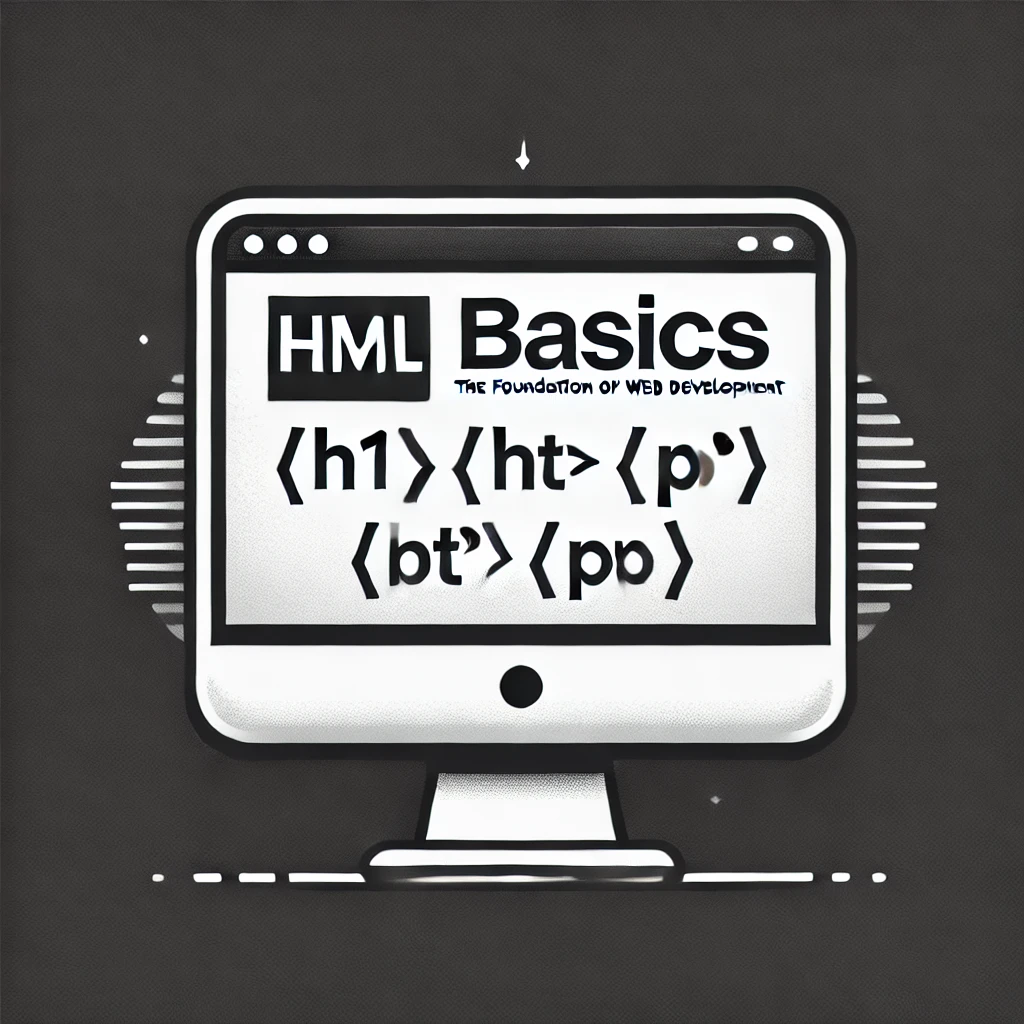HTML: The Backbone of Web Development
HTML is a markup language used to structure and present content on the internet. It defines the structure of web pages using a system of tags and attr

Introduction
HTML, or HyperText Markup Language, is the standard language used to create and structure content on the web. It is the foundation of every website and serves as the backbone for web development. This article explores what HTML is, its history, core features, and why it remains essential in the digital age.
What is HTML?
HTML is a markup language used to structure and present content on the internet. It defines the structure of web pages using a system of tags and attributes. These tags instruct the browser on how to display elements like text, images, videos, and links.
A Brief History of HTML
-
1991: HTML was introduced by Tim Berners-Lee, the creator of the World Wide Web. The initial version was simple and focused on linking documents.
-
1995: HTML 2.0 was released, standardizing basic features and adding support for forms.
-
1999: HTML 4.01 became widely adopted, offering more robust support for multimedia and styling.
-
2014: HTML5 was officially released, revolutionizing the web with features for multimedia, semantic elements, and responsive design.
Key Features of HTML
1. Structure:
HTML organizes content into headings, paragraphs, lists, and tables, creating a logical structure for web pages.
2. Hyperlinks:
Enables linking between web pages using the <a> tag, forming the backbone of the World Wide Web.
3. Multimedia Support:
HTML supports images (<img>), audio (<audio>) , and video (<video>), enhancing user experiences.
4. Forms:
HTML forms (<form>) collect user input, essential for functionalities like login pages and surveys.
5. Semantics:
HTML5 introduced semantic tags like <header>, <article>, and <footer> to make web pages more meaningful and accessible.
Basic HTML Syntax
Here’s a simple HTML example:
<!DOCTYPE html>
<html>
<head>
<title>Example Page</title>
</head>
<body>
<h1>Hello, World!</h1>
<p>This is a paragraph.</p>
</body>
</html>
<!DOCTYPE html>: Declares the document type as HTML5.
<html>: The root element of the HTML document.
<head>: Contains metadata like the title and styles.
<body>: Contains the visible content of the page.
Advantages of HTML
-
Simplicity: Easy to learn and use, even for beginners.
-
Compatibility: Supported by all web browsers.
-
Flexibility:Works seamlessly with CSS (Cascading Style Sheets) and JavaScript to create dynamic web applications.
-
Open Standard: No licensing fees or proprietary restrictions.
Limitations of HTML
-
Static Nature: HTML alone cannot create dynamic web pages; it requires JavaScript or server-side languages.
-
Complex Design: Styling and layout require CSS, as HTML focuses primarily on structure.
-
Learning Curve for Advanced Features: While basic HTML is simple, mastering modern features like forms and APIs can take time.
Why HTML is Still Relevant
Despite the emergence of advanced frameworks and tools, HTML remains indispensable. Every website, regardless of complexity, begins with HTML. With the introduction of HTML5, it has become more powerful, supporting modern web needs like responsive design and multimedia integration.
Conclusion
HTML is more than just a markup language; it is the building block of the internet. Whether you're a beginner or an experienced developer, understanding HTML is crucial for creating effective and accessible web pages. As the web continues to evolve, HTML will remain at its core, empowering developers to build the digital experiences of tomorrow.
Leave a Comment
Releted Articles

HTML Basics: The Foundation of Web Development
With the web evolving, HTML continues to be relevant. New versions, like HTML5, introduce features for multimedia,

A Complete Guide to Back-End Development: The Engine Powering the Web
Back-end development is the backbone of modern web applications. While front-end development

A Comprehensive Guide to Front-End Development: Building the User Interface of the Web
As technology advances, front-end development continues to evolve. Here are some emerging trends






0 comments
There is no any command yet!